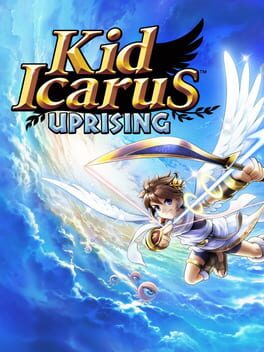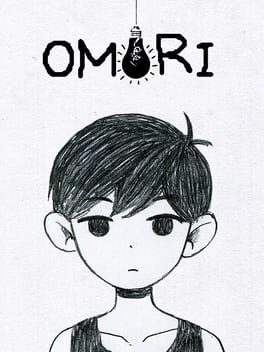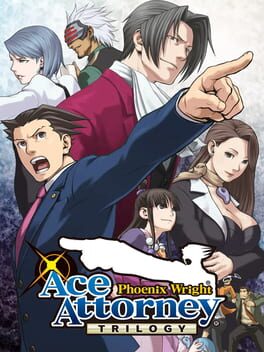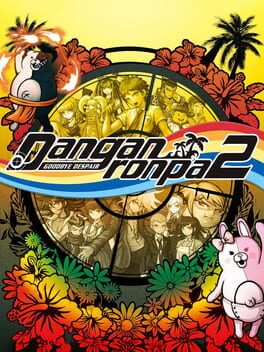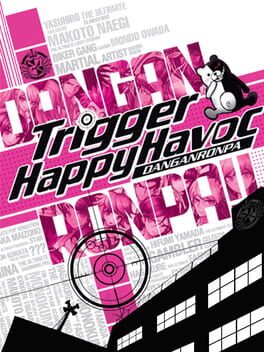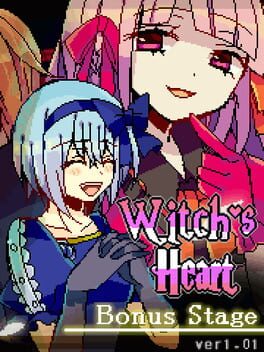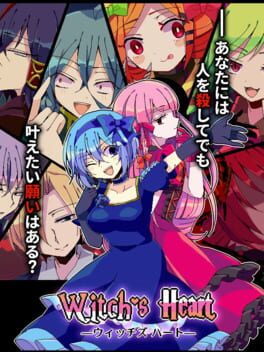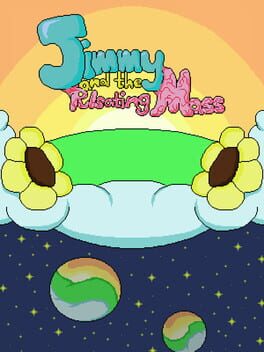poochy
Bio
i write long reviews and play too many rpg maker games
i write long reviews and play too many rpg maker games
Badges

1 Years of Service
Being part of the Backloggd community for 1 year

Busy Day
Journaled 5+ games in a single day

GOTY '23
Participated in the 2023 Game of the Year Event

Well Written
Gained 10+ likes on a single review

Shreked
Found the secret ogre page

Roadtrip
Voted for at least 3 features on the roadmap

Loved
Gained 100+ total review likes

Gone Gold
Received 5+ likes on a review while featured on the front page

Popular
Gained 15+ followers

N00b
Played 100+ games

Best Friends
Become mutual friends with at least 3 others

Liked
Gained 10+ total review likes

Noticed
Gained 3+ followers
Favorite Games
233
Total Games Played
016
Played in 2024
006
Games Backloggd
Recently Played See More
Recently Reviewed See More
In the opening, a young woman named Claire runs into an old mansion to escape from the rain, oblivious to the intense and terrible journey that was to await her. Much akin, my lack of reading comprehension on vgperson's website made me wander into this game, just wanting another cool and cozy RPG Maker experience, unprepared to lose my mind at the journey ahead. What presents itself as a pulpy horror anthology, and very often is one, turned out to be the root of one person's ongoing mega project that's left me incredibly enticed.
An interesting realization came upon me while playing Witch's Heart: one that probably should have been obvious much sooner, but feels particularly pronounced here. RPG Maker has been utilized by a lot of professional illustrators who wish to display their creative visions in game form: Miwashiba, Omocat, Deep Sea Prisoner, Segawa (I think), Nemlei, IZ (the creator of this game). It makes sense why, it's a relatively easy to get into series of engines that does a lot of the lower-level work for you. Oftentimes this leads to a lot of the fidelity of the games being showcased through illustrated stills, playing to the creators' strengths, and it's something I really love. It makes connecting with the characters in these games so much easier when provided such a vivid visual showcase of them. Witch's Heart is no exception, with a frankly absurd number of CGs throughout each cutscene that add so much to the experience.
When initially faced with the chapter selection, I was under the impression each would lead to an ending of ambiguous canonicity, like much of its RPG Maker ilk. I was kind of right, but you end up playing each storyline in order, with each one rearranging similar set pieces to tell a new storyline that builds off the ones that come before. This framing ends is used really well to shine a spotlight on each of the characters. My early favorite was Ashe, the silliest zoomiest Poochy-bait-est character ever, but despite not being present much until the end, Noel grew on me a ton as well. The story framing also ended up playing into the story itself, culminating in a moment that made a bit emotional towards the end (which isn’t an easy thing to do)!
While most of the story is communicated in effectively a visual novel format, thrown in are adventure segments comparable to moon, where you wander the mansion helping out the monstrous inhabitants. The connective tissue between these two different modes is almost non-existent. You’re just told “okay go help the monsters” for no real reason, not even in the macro sense of why you’re helping them out in the first place. Claire is just that nice, I guess. The total non-sequiturity throws a wrench into the pacing at times, especially when the adventure segments are slammed right before a big story moment. Then you have to figure out how to continue the story and, damn, sometimes you’re just forced to check every room to continue. Thankfully, the mansion itself is fairly small, but it ends up as a consistency annoyance regardless.
In spite of the pacing issues, however, the adventure segments themselves are a cozy time. Much like how the story overlays upon itself with each route, colorful “fantasy zones”, stretching beyond the walls of the mansion, reveal themselves. Each one id full of its own nooks and crannies to explore and often portals deeper into completely different worlds. Venturing through each neon-illuminated landscape can feel almost like a tiny version of Yume Nikki. You even get new tools across each route to interact with these worlds in new ways.
Some areas even include something that could be considered combat!…? In a very bold decision, the game tries to approximate Zelda 1-esque combat under the limitations of the RPG Maker 2003 engine, and it goes about as well as you’d expect. Every time you press the attack button, it pauses to check for an interaction, making it all feel so start-and-stop. It sucks. I can appreciate the attempt to do something different, but it sucks. Graciously, you don’t have to engage with the combat much at all, but it leaves me wondering why bother having it in the first place. It never feels like the game benefits from the combat in a thematic sense, and it finds plenty of non-combat ways to up the tension.
All these issues, as easy they are to gripe about, slip away with just how engrossing the story is. Finishing the third storyline right before having to leave for work left me with such an itch, desperately wanting to know how the book closes on these characters. And well, I still don’t know! Upon completing the fourth route, I discovered this is but Act I of the full Witch’s Heart story and that’s… exciting! I’m all for getting more time with this cast, to see how this story can be layered upon further. Only 2 of the remaining 5 routes have been released in the six years since the original release, but I’m ready to the process. This is now my Deltarune.
An interesting realization came upon me while playing Witch's Heart: one that probably should have been obvious much sooner, but feels particularly pronounced here. RPG Maker has been utilized by a lot of professional illustrators who wish to display their creative visions in game form: Miwashiba, Omocat, Deep Sea Prisoner, Segawa (I think), Nemlei, IZ (the creator of this game). It makes sense why, it's a relatively easy to get into series of engines that does a lot of the lower-level work for you. Oftentimes this leads to a lot of the fidelity of the games being showcased through illustrated stills, playing to the creators' strengths, and it's something I really love. It makes connecting with the characters in these games so much easier when provided such a vivid visual showcase of them. Witch's Heart is no exception, with a frankly absurd number of CGs throughout each cutscene that add so much to the experience.
When initially faced with the chapter selection, I was under the impression each would lead to an ending of ambiguous canonicity, like much of its RPG Maker ilk. I was kind of right, but you end up playing each storyline in order, with each one rearranging similar set pieces to tell a new storyline that builds off the ones that come before. This framing ends is used really well to shine a spotlight on each of the characters. My early favorite was Ashe, the silliest zoomiest Poochy-bait-est character ever, but despite not being present much until the end, Noel grew on me a ton as well. The story framing also ended up playing into the story itself, culminating in a moment that made a bit emotional towards the end (which isn’t an easy thing to do)!
While most of the story is communicated in effectively a visual novel format, thrown in are adventure segments comparable to moon, where you wander the mansion helping out the monstrous inhabitants. The connective tissue between these two different modes is almost non-existent. You’re just told “okay go help the monsters” for no real reason, not even in the macro sense of why you’re helping them out in the first place. Claire is just that nice, I guess. The total non-sequiturity throws a wrench into the pacing at times, especially when the adventure segments are slammed right before a big story moment. Then you have to figure out how to continue the story and, damn, sometimes you’re just forced to check every room to continue. Thankfully, the mansion itself is fairly small, but it ends up as a consistency annoyance regardless.
In spite of the pacing issues, however, the adventure segments themselves are a cozy time. Much like how the story overlays upon itself with each route, colorful “fantasy zones”, stretching beyond the walls of the mansion, reveal themselves. Each one id full of its own nooks and crannies to explore and often portals deeper into completely different worlds. Venturing through each neon-illuminated landscape can feel almost like a tiny version of Yume Nikki. You even get new tools across each route to interact with these worlds in new ways.
Some areas even include something that could be considered combat!…? In a very bold decision, the game tries to approximate Zelda 1-esque combat under the limitations of the RPG Maker 2003 engine, and it goes about as well as you’d expect. Every time you press the attack button, it pauses to check for an interaction, making it all feel so start-and-stop. It sucks. I can appreciate the attempt to do something different, but it sucks. Graciously, you don’t have to engage with the combat much at all, but it leaves me wondering why bother having it in the first place. It never feels like the game benefits from the combat in a thematic sense, and it finds plenty of non-combat ways to up the tension.
All these issues, as easy they are to gripe about, slip away with just how engrossing the story is. Finishing the third storyline right before having to leave for work left me with such an itch, desperately wanting to know how the book closes on these characters. And well, I still don’t know! Upon completing the fourth route, I discovered this is but Act I of the full Witch’s Heart story and that’s… exciting! I’m all for getting more time with this cast, to see how this story can be layered upon further. Only 2 of the remaining 5 routes have been released in the six years since the original release, but I’m ready to the process. This is now my Deltarune.
Balatro is the antethical to everything I've held dear to the medium in recent times: a near-completely artistically stripped down experience devoid of story, made to be repeated in perpetuity. Even the brightest jewels of the roguelike genre—Hades and Inscryption—I cherish largely in spite of their nature as roguelikes. Yet, after spending six hours playing through on release day, I was already hooked in deeply, just to have it embed deeper and deeper into my soul with every game.
There's an inherent trance that every run builds up, setting up the perfect hand with discards before firing off an insane chain reaction of multipliers. So many variables at play that it's pointless to crunch beyond a rough estimate, leaving each hand as something of it's own gamble. Sometimes that leaves you short of a win by only a fraction of the point threshold to hit, but sometimes that hand you thought would net you a few hundred thousand ticks all the way up to 20 million. This has happened to me on multiple occasions! And it's a glorious, visceral experience each and every time.
The biggest strength with Balatro, I feel, is the ease and variety of ways in which it feels like the game can be snapped in two. I have already beaten 7 or 8 runs of the game, more than any other roguelike I've played besides maybe Enter the Gungeon (which I dumped 100 hours into during high school), and am thirsting to do even more. From my experience, most other roguelikes make winning a run a far scarcer experience in order to help perpetuate the gameplay loop. But as it turns out, winning is really fun.
Not only that, every single winning run takes a completely separate angle to win: totally different Joker cards, deck compositions, and hands I aim for. It's so easy to feel like I've found the stupidest possible way to win the run, just to come around to the end 2-3 runs later with something far stupider. And even after each winning run, I feel inclined to continue in the endless mode, where the point thresholds start going up exponentially just to see how far the utter stupidity can take me. Many runs end up becoming less about whether or not I can win with my setup, but rather the far more interesting question of how far towards infinity I can reach with it. I'm prematurely a bit excited for the run I eventually get on that lets me pass my current wall, the 300 million point threshold.
It's pretty impressive how Balatro really just... doesn't have any issues. Thanks to being so stripped down, it manages to be absolutely airtight in its design while providing a cornucopia of variety. It's just an absolute masterpiece of design. A welcome surprise for personal game of the year contender.
There's an inherent trance that every run builds up, setting up the perfect hand with discards before firing off an insane chain reaction of multipliers. So many variables at play that it's pointless to crunch beyond a rough estimate, leaving each hand as something of it's own gamble. Sometimes that leaves you short of a win by only a fraction of the point threshold to hit, but sometimes that hand you thought would net you a few hundred thousand ticks all the way up to 20 million. This has happened to me on multiple occasions! And it's a glorious, visceral experience each and every time.
The biggest strength with Balatro, I feel, is the ease and variety of ways in which it feels like the game can be snapped in two. I have already beaten 7 or 8 runs of the game, more than any other roguelike I've played besides maybe Enter the Gungeon (which I dumped 100 hours into during high school), and am thirsting to do even more. From my experience, most other roguelikes make winning a run a far scarcer experience in order to help perpetuate the gameplay loop. But as it turns out, winning is really fun.
Not only that, every single winning run takes a completely separate angle to win: totally different Joker cards, deck compositions, and hands I aim for. It's so easy to feel like I've found the stupidest possible way to win the run, just to come around to the end 2-3 runs later with something far stupider. And even after each winning run, I feel inclined to continue in the endless mode, where the point thresholds start going up exponentially just to see how far the utter stupidity can take me. Many runs end up becoming less about whether or not I can win with my setup, but rather the far more interesting question of how far towards infinity I can reach with it. I'm prematurely a bit excited for the run I eventually get on that lets me pass my current wall, the 300 million point threshold.
It's pretty impressive how Balatro really just... doesn't have any issues. Thanks to being so stripped down, it manages to be absolutely airtight in its design while providing a cornucopia of variety. It's just an absolute masterpiece of design. A welcome surprise for personal game of the year contender.
This review contains spoilers
At our core, every human is a patchwork of ideas imprinted upon us by others, both consciously and subconsciously. We then continue the cycle of imprinting on those around us, again, both consciously and subconsciously. There’s a reason all art is political, even if not all art desires to engage politically.
It feels impossible, no matter how trite it may feel, to discuss Jimmy and the Pulsating Mass without consistent reference to the inspirations it wears on its sleeve (a strong enough invitation for comparison). Something of a classic Final Fantasy-structured globetrotting adventure with a reinterpretation of Yume Nikki’s transformation system. And, most pressingly of course, a closer set of vibes to what makes the Mother trilogy so beloved than any other game I’ve played. Standing on the shoulders of giants, Jimmy manages, with only a few missteps, to coalesce into an immensely charming RPG with an impressive amount of depth to it.
It’s quickly apparent getting situated in Jimmy’s home atop the clouds it’s some kinda of dream world, beset by the growing rot of the titular Pulsating Mass (an obvious stand-in for… something). This vast world, so rich in variety, is the star of the show. A constant stream of interesting new locales and dungeons reflecting upon Jimmy’s young psyche manages to capture the oh-so-pristine feeling of being a real globe-trotting adventure. It really hits in the endgame cleanup, having the Final Fantasy airship moment and realizing how far I’ve come since the starting island, and how much there still was to experience. Even when I dug well into the game, there was still a solid half-dozen side dungeons with their own unique aesthetics, lore, and gameplay mechanics I never even touched.
Combat alone is chocked to the brim with a stupid number of elements that are so fun to really dig into. Jimmy alone has like 10 separate forms he can switch between in battle, each with completely different niches. As you level them up you unlock pieces of each form to spec base form JImmy into any sort of fearsome fighter. The rest of the team have more predefined niches, but plenty of weapons, equipment, skill manuals, accessories, and collectable furniture that gives a ton of flexibility in the team dynamics. Towards the end, the game does some I LOVE when games do: giving you gimmicky equipment that fundamentally changes how characters work. In the final areas, my healer was rocking with the strongest basic attack in the entire party after an entire game of her being the weakest by a large margin.
The enemies, not to be outmatched, are full of their own little gimmicks, particularly interacting with Goon Jimmy’s grifting. Got an alarm robot in the way? Just steal its voice box and let it flounder in silence. Didn’t steal it and let the alarm summon a Deathbot 3000? Just steal the Deathbot 3000’s voicebox and—oh—that doesn’t prevent it from death-ing you. Of particular interest, basically every boss fight has an interesting gimmick attached to it as well. It’s an interesting contrast to Final Fantasy VII, which (like VI) opens with a boss who’s counterattack serves as a good tutorial to the ATB system, before forgetting boss gimmicks can be a thing until the superbosses. It’s really impressive how well realized Jimmy’s combat ends up being, easily the best combat of any RPG Maker game I’ve played (granted, Omori is probably the only game that remotely competes).
Unfortunately, the game decides to take on particular element from the Mother series that… well… read my Mother 3 review: the combat gets to be a SLOG. While it has the nice QoL feature of being able to ignore some encounters when you hit some arbitrary requirement (I assume level??), each individual encounter is difficult enough and enough of a resource drain to become exhausting, and often leaving you unprepared for boss fights with massive HP pools at the end of a long dungeon.
Almost every boss became a loop of attempting it, realizing I did not have the resources to survive the war of attrition against the boss, then switching to easy mode to get through it. The reason it took so long for me to beat the game was the constant ramming my head against a wall before putting it down for a few weeks, several times over. Until halfway through the game when I decided to just keep easy mode on full time. despite the game pinning normal mode as “the intended experience”, easy mode was so much more enjoyable. It saved the experience for me really, turning it into a really chill adventure overall.
This adventure is constantly intertwined with the adventures of a whole bunch of other characters. While the concept of “reoccuring side characters” is of course not remotely unique, I think its notable how many the game has. Halfway through the game the game stops everything to do what could be called an “every character in the game so far tournament arc” and it’s a delight. It (perhaps counterintuitively) really builds up the sense of adventure and strong vibes.
To reuse the phrasing that certainly made people silently wish death upon me on the Mario Discord, Jimmy and the Pulsating Mass is the “quirky Earthbound inspired indie game” that most exactly captures the vibes that made the progenitor trilogy so appealing. I struggle to pick out the exact elements that make them match so hard beyond a lot of very earnest humor interspersed with some really engrossing descriptions (albeit far more R-rated than anything you’d find in Mother). Still, it ended up making for a very similar feeling experience to the one I had playing Mother 3 last year—and not one that felt derivative in the slightest.
The art style does not carry the vibes as well as the writing, with sprites often looking fairly crude in a way that feels amateurish. It gets a tad unbearable in the game’s gorier moments. Sometimes, the game pulls out a pretty impressive looking part that makes me think the spritework is meant to reflect the crudeness and edginess of a child like Jimmy’s thoughts. But then I see the kinda abhorrent spritework for the visual novel section of the game and I lose benefit of the doubt. At least the soundtrack absolutely slaps.
Ironically, the weakest characters end up being the main cast: Jimmy’s family. They’re not bad characters, but just end up feeling kind of thin and “along for the ride” when spending so much of the game with them. And when the story is so focused on Jimmy’s family, it ended up not really emotionally landing for me, especially compared to how I’ve seen it hit some others. It took until near the end, when Jimmy is given brief flashes on consciousness to realize the Pulsating Mass I suspected to be some sort of metaphor (Earthbound-inspired indie RPG about depression REAL???) was literally a Pulsating Mass. It’s a cancerous tumor. Jimmy is in a coma. Then the rest of the game ends up playing out just about how you’d expect it to. While there’s some texture provided, particularly during the glimpses back into reality, to keep it from feel too trite, I can’t help from feeling somewhat dissatisfied.
Jimmy’s adventure is moreso about the journey than the destination, though, and I think the game even makes the case for that. While not some must play game that will stick with me forever, there’s so much heart that it’s hard not to really like it in spite of the issues. It’s a game of impressive craft, especially considering it was a solo development.
For the final, secret form Jimmy can unlock, he imagines himself as the phoenix. “He feels alive. Energized. Jimmy thinks that if he put his mind to it, he could fly right out of bed. He could fly and fly. He could burn bright forever, like a brand new sun.”
It’s a game that knows how to be beautiful.
It feels impossible, no matter how trite it may feel, to discuss Jimmy and the Pulsating Mass without consistent reference to the inspirations it wears on its sleeve (a strong enough invitation for comparison). Something of a classic Final Fantasy-structured globetrotting adventure with a reinterpretation of Yume Nikki’s transformation system. And, most pressingly of course, a closer set of vibes to what makes the Mother trilogy so beloved than any other game I’ve played. Standing on the shoulders of giants, Jimmy manages, with only a few missteps, to coalesce into an immensely charming RPG with an impressive amount of depth to it.
It’s quickly apparent getting situated in Jimmy’s home atop the clouds it’s some kinda of dream world, beset by the growing rot of the titular Pulsating Mass (an obvious stand-in for… something). This vast world, so rich in variety, is the star of the show. A constant stream of interesting new locales and dungeons reflecting upon Jimmy’s young psyche manages to capture the oh-so-pristine feeling of being a real globe-trotting adventure. It really hits in the endgame cleanup, having the Final Fantasy airship moment and realizing how far I’ve come since the starting island, and how much there still was to experience. Even when I dug well into the game, there was still a solid half-dozen side dungeons with their own unique aesthetics, lore, and gameplay mechanics I never even touched.
Combat alone is chocked to the brim with a stupid number of elements that are so fun to really dig into. Jimmy alone has like 10 separate forms he can switch between in battle, each with completely different niches. As you level them up you unlock pieces of each form to spec base form JImmy into any sort of fearsome fighter. The rest of the team have more predefined niches, but plenty of weapons, equipment, skill manuals, accessories, and collectable furniture that gives a ton of flexibility in the team dynamics. Towards the end, the game does some I LOVE when games do: giving you gimmicky equipment that fundamentally changes how characters work. In the final areas, my healer was rocking with the strongest basic attack in the entire party after an entire game of her being the weakest by a large margin.
The enemies, not to be outmatched, are full of their own little gimmicks, particularly interacting with Goon Jimmy’s grifting. Got an alarm robot in the way? Just steal its voice box and let it flounder in silence. Didn’t steal it and let the alarm summon a Deathbot 3000? Just steal the Deathbot 3000’s voicebox and—oh—that doesn’t prevent it from death-ing you. Of particular interest, basically every boss fight has an interesting gimmick attached to it as well. It’s an interesting contrast to Final Fantasy VII, which (like VI) opens with a boss who’s counterattack serves as a good tutorial to the ATB system, before forgetting boss gimmicks can be a thing until the superbosses. It’s really impressive how well realized Jimmy’s combat ends up being, easily the best combat of any RPG Maker game I’ve played (granted, Omori is probably the only game that remotely competes).
Unfortunately, the game decides to take on particular element from the Mother series that… well… read my Mother 3 review: the combat gets to be a SLOG. While it has the nice QoL feature of being able to ignore some encounters when you hit some arbitrary requirement (I assume level??), each individual encounter is difficult enough and enough of a resource drain to become exhausting, and often leaving you unprepared for boss fights with massive HP pools at the end of a long dungeon.
Almost every boss became a loop of attempting it, realizing I did not have the resources to survive the war of attrition against the boss, then switching to easy mode to get through it. The reason it took so long for me to beat the game was the constant ramming my head against a wall before putting it down for a few weeks, several times over. Until halfway through the game when I decided to just keep easy mode on full time. despite the game pinning normal mode as “the intended experience”, easy mode was so much more enjoyable. It saved the experience for me really, turning it into a really chill adventure overall.
This adventure is constantly intertwined with the adventures of a whole bunch of other characters. While the concept of “reoccuring side characters” is of course not remotely unique, I think its notable how many the game has. Halfway through the game the game stops everything to do what could be called an “every character in the game so far tournament arc” and it’s a delight. It (perhaps counterintuitively) really builds up the sense of adventure and strong vibes.
To reuse the phrasing that certainly made people silently wish death upon me on the Mario Discord, Jimmy and the Pulsating Mass is the “quirky Earthbound inspired indie game” that most exactly captures the vibes that made the progenitor trilogy so appealing. I struggle to pick out the exact elements that make them match so hard beyond a lot of very earnest humor interspersed with some really engrossing descriptions (albeit far more R-rated than anything you’d find in Mother). Still, it ended up making for a very similar feeling experience to the one I had playing Mother 3 last year—and not one that felt derivative in the slightest.
The art style does not carry the vibes as well as the writing, with sprites often looking fairly crude in a way that feels amateurish. It gets a tad unbearable in the game’s gorier moments. Sometimes, the game pulls out a pretty impressive looking part that makes me think the spritework is meant to reflect the crudeness and edginess of a child like Jimmy’s thoughts. But then I see the kinda abhorrent spritework for the visual novel section of the game and I lose benefit of the doubt. At least the soundtrack absolutely slaps.
Ironically, the weakest characters end up being the main cast: Jimmy’s family. They’re not bad characters, but just end up feeling kind of thin and “along for the ride” when spending so much of the game with them. And when the story is so focused on Jimmy’s family, it ended up not really emotionally landing for me, especially compared to how I’ve seen it hit some others. It took until near the end, when Jimmy is given brief flashes on consciousness to realize the Pulsating Mass I suspected to be some sort of metaphor (Earthbound-inspired indie RPG about depression REAL???) was literally a Pulsating Mass. It’s a cancerous tumor. Jimmy is in a coma. Then the rest of the game ends up playing out just about how you’d expect it to. While there’s some texture provided, particularly during the glimpses back into reality, to keep it from feel too trite, I can’t help from feeling somewhat dissatisfied.
Jimmy’s adventure is moreso about the journey than the destination, though, and I think the game even makes the case for that. While not some must play game that will stick with me forever, there’s so much heart that it’s hard not to really like it in spite of the issues. It’s a game of impressive craft, especially considering it was a solo development.
For the final, secret form Jimmy can unlock, he imagines himself as the phoenix. “He feels alive. Energized. Jimmy thinks that if he put his mind to it, he could fly right out of bed. He could fly and fly. He could burn bright forever, like a brand new sun.”
It’s a game that knows how to be beautiful.
